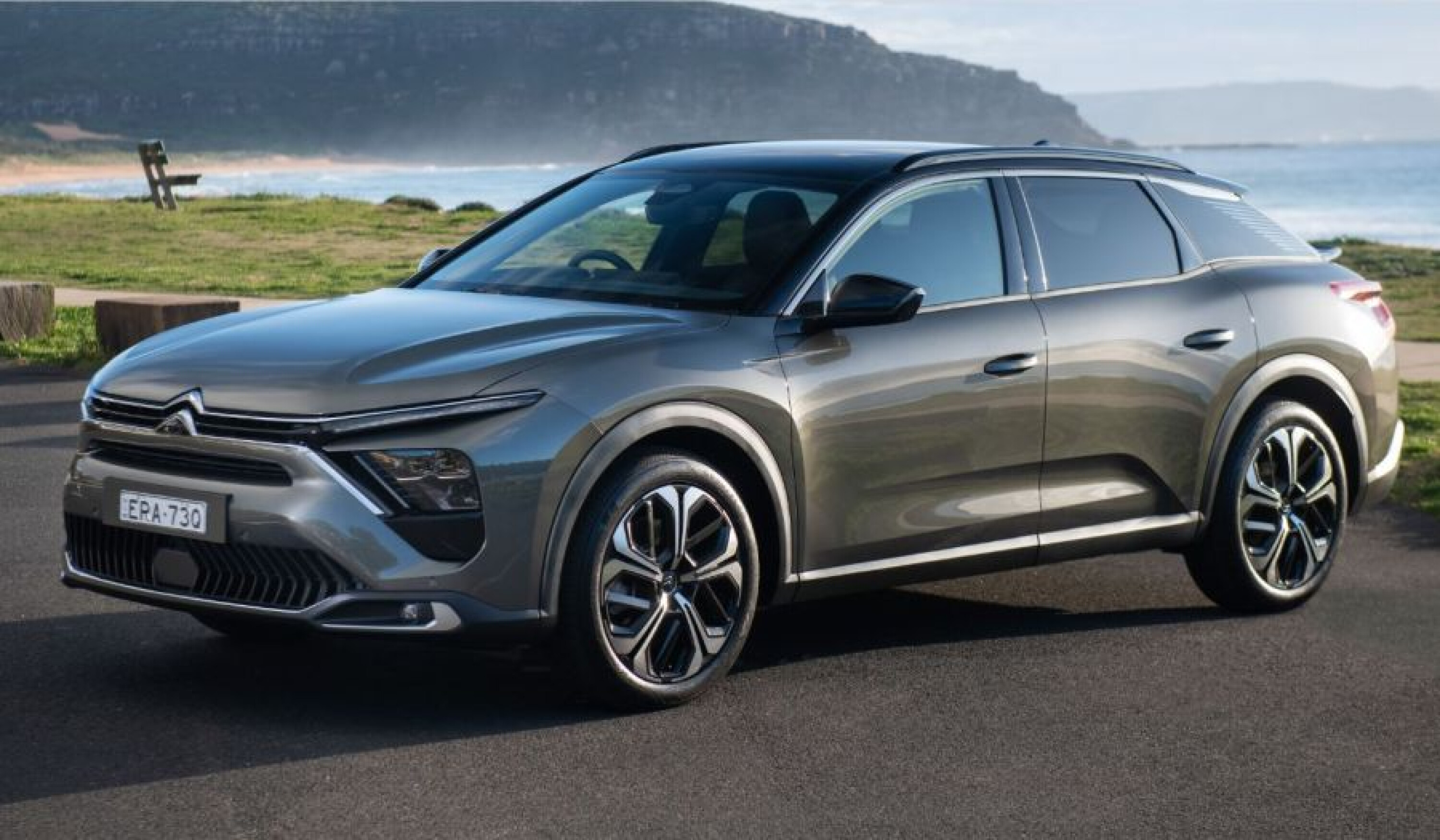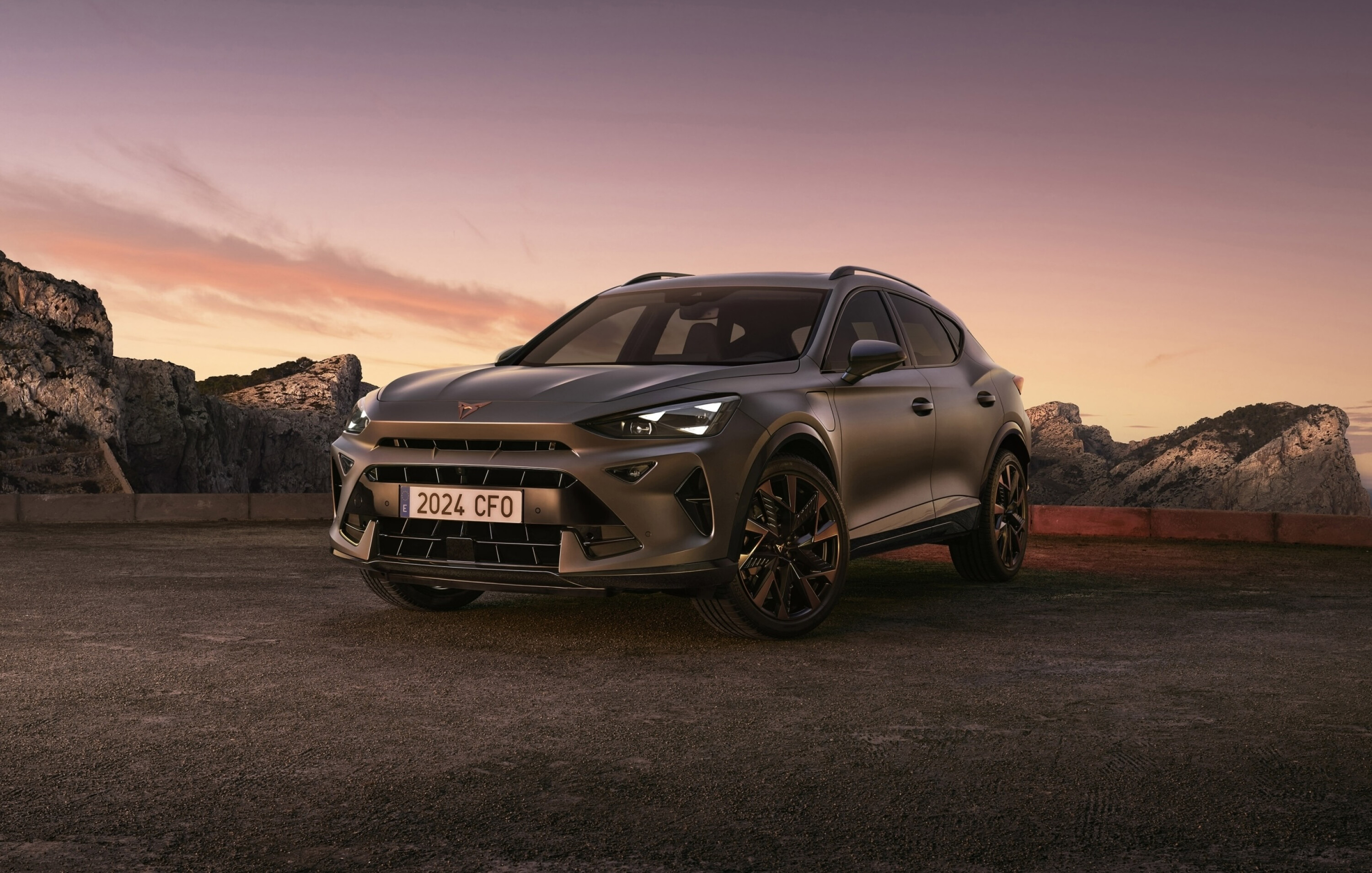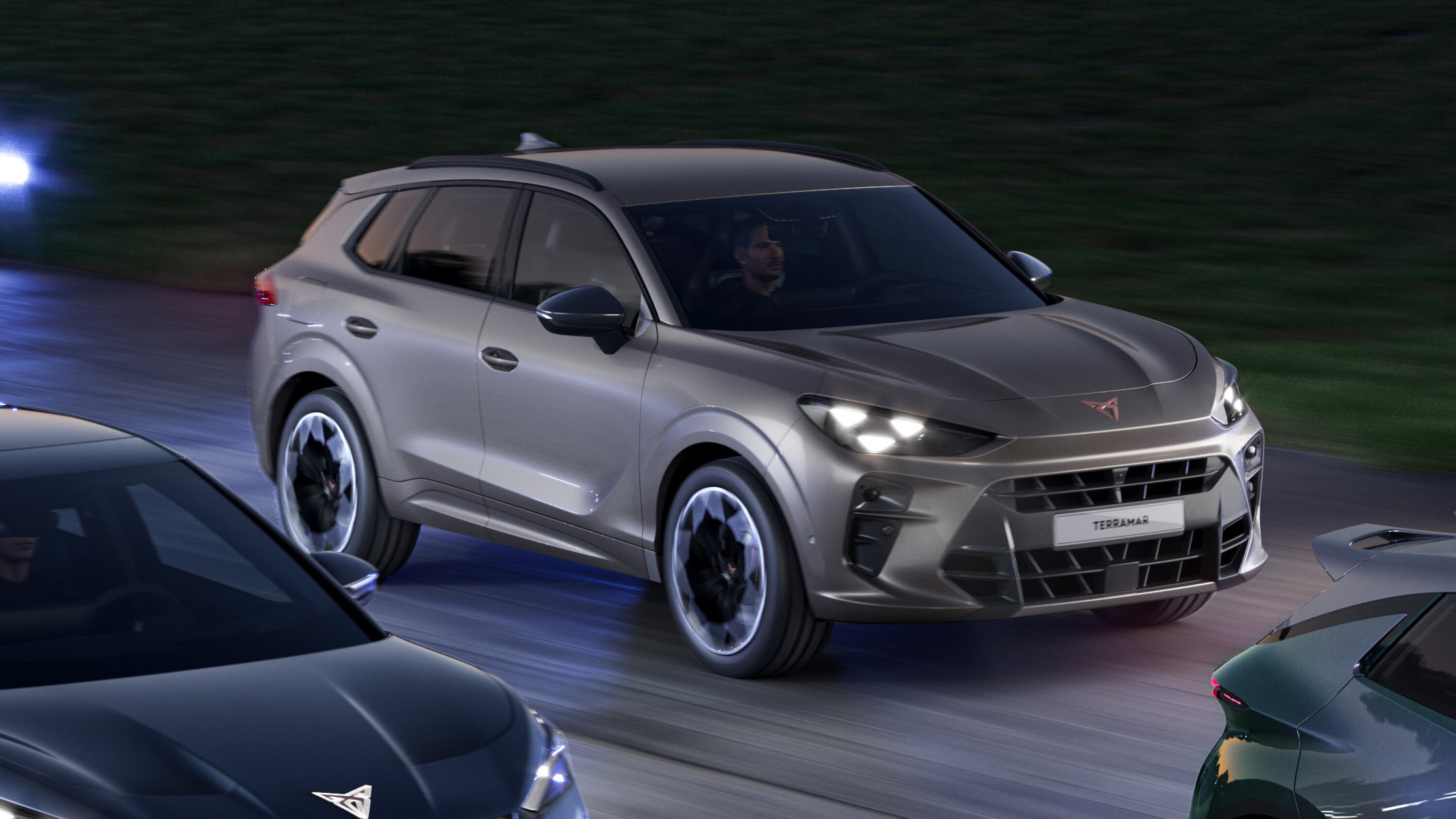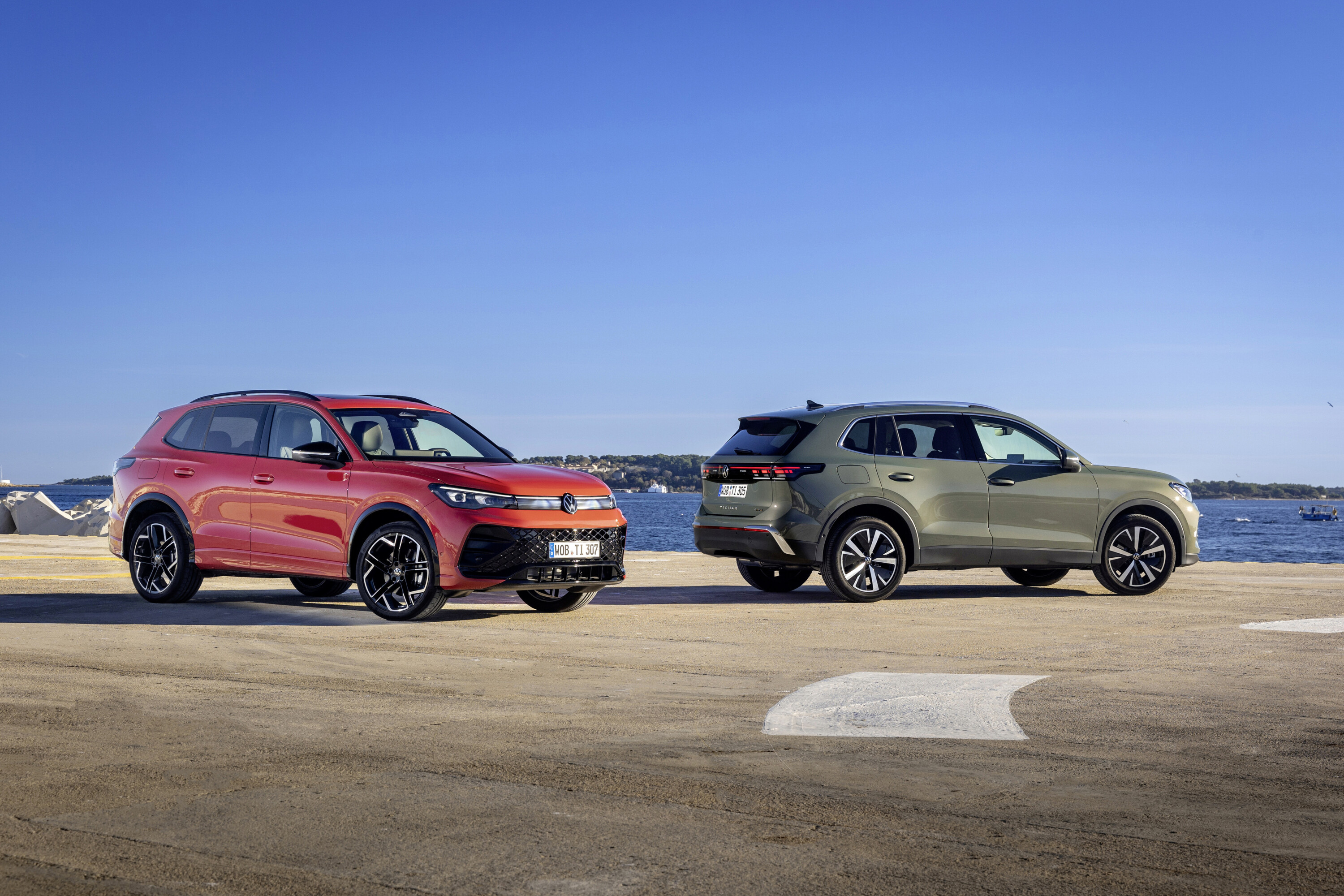
Plug-in hybrids (PHEVs) promise the best of both worlds – with electric, emissions-free propulsion for short trips, but with the long-range flexibility and convenience of petrol or diesel engines.
PHEV sales are enjoying a boom in Australia so far in 2024, along with regular (non-plug-in) combustion-electric vehicles.
Adding the the allure is the Fringe Benefits Tax (FBT) exemption, meaning buyers could save thousands in tax on a novated lease for a PHEV before 1st April 2025.
Here are the plug-in hybrids locked in – plus other models that have potential – for local showrooms in 2024 and beyond…

Jump Ahead
- Audi A5/S5 Avant
- BYD Shark
- Citroen C5 X PHEV
- Cupra Formentor VZe
- Cupra Leon Sportstourer VZe
- Cupra Terramar
- Ford Ranger PHEV
- Jeep Compass 4xe
- Kia Sorento PHEV
- Lamborghini Urus SE
- Mazda CX-5 PHEV
- Mazda CX-70 PHEV and Mazda CX-90 PHEV
- Mercedes-AMG GLC63 S E Performance
- MG HS PHEV
- Peugeot 408 GT
- Volkswagen Golf GTE
- Volkswagen Tiguan eHybrid

Audi A5/S5 Avant
The Audi A4 will become an EV – so if you’re after a hybrid midsized passenger car, you’ll need the new A5, set for its global unveiling in the second half of 2024.
While Australia’s line-up has not been confirmed – given Audi’s German headquarters has not shown the vehicle yet – we know the new A5 will bring a sedan, five-door ‘Sportback’ hatch and an Avant station wagon.It will use Audi’s PPC (Premium Platform Combustion) underpinnings and offer mild hybrid, diesel and plug-in hybrid versions including high-performance S5 model as it guns for its arch-rival BMW 3-Series and Mercedes-Benz C-Class.

BYD Shark
In the wheel tracks of the Sealion 6 SUV, BYD will be first to market with a plug-in hybrid dual-cab ute when it arrives later this year – or early 2025 – well ahead of the PHEV Ford Ranger set for 2025 (see further down this list).
The Shark – revealed in May with “more than 321kW”, making it more powerful than a Ford Ranger Raptor – will attack the lucrative dual-cab ute segment using a 1.5-litre turbocharged four-cylinder petrol engine and pair of electric motors.
Shark also has an 835kg payload – 118kg more than a Ranger Raptor’s – and the same 2500kg braked tow rating as the ferocious Ford, but short of the Ranger PHEV’s “up to 3500kg” rating.

Citroen C5 X PHEV
Part sedan, part wagon, part SUV – the C5 X plug-in hybrid was confirmed for Australia when the petrol version arrived here in late 2022 and will be in local showrooms before the end of 2024.
The ‘avant-garde’ body design sits on a 2785mm wheelbase for a 545L boot area in petrol versions – expandable to 1640L to the roof with the rear seats folded – but based on overseas specs, the hybrid unit reduces that by 60 litres.
It uses the same 133kW/250Nm 1.6-litre four-cylinder petrol engine eight-speed auto but adds an 80kW electric motor and 11.9kWh battery – with a 50km range under electric power.

Cupra Formentor VZe
Cupra’s best-selling vehicle in Australia will double its electric-only driving range in 2025.
The updated Formentor VZe sees a 19.7kWh battery – in place of the current car’s 10.9kWh pack – that enables range to jump from a claimed 58km to “more than 100km”.
Total power’s up 20kWw to 200kW, too, courtesy of tweaks to the 1.4-litre four-cylinder turbo petrol engine and electric motor.
The 2025 Formentor VZe also scores a new ‘shark nose’ front-end, revised rear end design while the Spanish car maker says it has improved interior fit and finish, too.

Cupra Leon Sportstourer VZe
The Leon Sportstourer will make its Australian debut in 2025 with a two-tier range featuring a petrol and a petrol PHEV.
The Sportstourer – Cupra speak for station wagon – will be offered in VZe spec with front-wheel drive and 1.5-litre turbocharged petrol four-cylinder and single plug-in electric motor producing 200kW.
Estimated to be priced around $70K, it will arrive with the updated Formentor meaning it is also expected to bring a 19.7kWh battery pack and “more than 100km” range, cabin upgrades and latest exterior styling.

Cupra Terramar
The Terramar is a 4.5-metre-long five-seat SUV alternative to the Nissan Qashqai and Toyota RAV4 and may come to Australia with a 2.0-litre plug-in powertrain from its Volkswagen Tiguan sibling.
There’s potential for a plug-in Terramar as Volkswagen has confirmed it’s considering a PHEV version of the next-generation Tiguan to Australia following the passing of the NVES (New Vehicle Emissions Standards).The Terramar shares the same underpinnings and would share the same hybrid powertrain – including a 100km electric only range – making it a prime candidate for Cupra to bring in a batch for local consumption from 2025.

Ford Ranger PHEV
Australia’s best-selling vehicle is going plug-in hybrid in 2025, stealing a march from arch-rival Toyota HiLux.
The Ford Ranger PHEV will be powered by a 2.3-litre turbocharged four-cylinder petrol engine – used in Ranger’s Volkswagen Amarok twin and also the four-pot Mustang since 2015 – with a yet-to-be detailed battery pack an electric motor.
Details are scant so far but Ford has confirmed a battery-only range of 45km for the Ranger PHEV and all-important 3500kg braked tow rating, as well as Ford’s ‘Pro Power Onboard’ system enabling the vehicle to act as a generator.
It has also said Ranger PHEV will come from Ford’s South Africa plant – where the UK gets its right-hand drive Rangers – instead of Australia’s usual Thai-made models, meaning a higher import tariff may push the showroom price beyond the $90k ask for a Ranger Raptor.

Jeep Compass 4xe PHEV
Landing from June, the Compass 4xe brings a plug-in hybrid to rival the Toyota Corolla Cross as petrol and diesel versions of the Compass are axed.
It brings a 132kW/270Nm 1.3-litre turbocharged four-cylinder petrol engine teamed with a 44kW rear-axle mounted electric motor and a 47km electric only range.
Compass 4xe pricing starts from $61,990 before on-road costs.
There’s also a 48V mild-hybrid Compass joining the PHEV in showrooms sometime in 2024.

Kia Sorento GT-Line PHEV
The Sorento Hybrid already in Australian showrooms will be joined by a plug-in hybrid version in the third quarter, with September tipped to be the most likely month for the facelifted PHEV’s arrival.
It will use the prolific Hyundai-Kia 1.6-litre turbocharged four-cylinder engine and electric motor combo, but overseas the PHEV makes marginally more power than the non-plug-in HEV Sorento.
Pricing is yet to be confirmed for the PHEV, which will be offered only in top-spec GT-Line trim to be the most expensive variant – sitting above the $70,330 (FWD) and $73,330 (AWD) non-plug-in hybrids currently in showrooms.

Lamborghini Urus SE
Practicality. Environmental consciousness. Lamborghini?
The seemingly contradictory idea of Lamborghini hybrid SUV is no longer – it’ll be here in 2025 with the $457,834 (plus on-roads) Urus SE.
Yet that flamboyant exterior promises firepower – whatever’s powering it – meaning the PHEV Urus SE packs 588kW/800Nm with claims of 0-100kn/h in 3.4 seconds and a 312km/h top speed.
That comes from an electric motor sandwiched between the 4.0-litre V8 and 8-speed transmission, with all-wheel drive powering the 2550kg SUV a distance of 60km under electric power alone.
The entire Lamborghini line-up will be plug-in hybrid by the end of 2024, including the Huracan successor and replacement for the Aventador, the Revuelto.

Mazda CX-5 PHEV
The next CX-5 is a landmark vehicle for Mazda Australia as the next generation of its best seller will include a plug-in hybrid EV for the first time.
In a bold move, it won’t be Toyota-powered despite a tie-up between the companies, with Toyota owning a five percent stake in Mazda.
The CX-50 SUV, sold in China and the US, uses the Toyota RAV4’s hybrid powertrain, but the next CX-5 will instead use the first in-house Mazda-developed plug-in set-up.
That’s all Mazda has confirmed for now, with scant information on the hybrid set-up, so watch this space as the CX-5 hybrid inches closer to Australian showrooms – and driveways.

Mazda CX-70 PHEV and Mazda CX-90 PHEV
Mazda’s flagship CX-90 SUV is already here in petrol and diesel form – but the plug-in is on the wish list and could be here sometime in 2025.
The seven-seat CX-90 PHEV is on sale in left-hand-drive markets including North America where it scores all the bells and whistles with a 2.5-litre four-cylinder petrol engine, electric motor and eight-speed auto combo powering all four wheels.
Right-hook markets including the UK and Japan don‘t offer the CX-90 at all – even in petrol or diesel guises – making its business case for Australia all the more difficult, yet one Mazda seems determined to make stick.
Same goes for the five-seat CX-70, with its local arrival not likely before the end of 2024.

Mercedes-AMG GLC63 S E
Ditching V8 power after decades of guttural, grunty engines continues at AMG, with the flagship performance GLC S E Performance SUV now a hi-po hybrid.
Running a 350kW 2.0-litre four-cylinder turbocharged petrol engine with a battery pack and pair of 75kW electric motors delivers a healthy 500kW total, and while there’s 2.3 tonnes to move, our first drive overseas found it was more agile and talented than the stats suggest.
Mercedes-AMG quotes just 3.5 seconds for the 0-100km/h sprint.
Somewhat a technological wonder, it’s pricey, though – available to order now priced at $193K for the wagon or from $199,500 for the Coupe (both figures before on-road costs).

MG HS PHEV
The second-generation MG HS is set to arrive in Australia by the end of 2024 with both petrol and plug-in hybrid petrol-electric powertrains.
A rebadged version of the Roewe RX5 – with both MG and Roewe part of SAIC – the new HS comes with much sharper styling and slightly larger measurements than the best-selling Toyota RAV4.
Details of the Australian-spec HS haven’t been confirmed, but the eRX5 plug-in hybrid sold in China uses a 138kW/300Nm 1.5-litre petrol four-cylinder engine, 10-speed auto and 180kW/270Nm electric motor fed by a 12.3kWh battery.That compares to the outgoing model’s 189kW/370Nm powertrain, with range falling from 63km to 50km.
A non-plug hybrid – sold as the Roewe D5X overseas – may join the Australian line-up in 2025, with prices expected to increase from the current HS PHEV’s $44k driveway starting point.

Peugeot 408 GT
The French car maker says the 408 is a new breed of Peugeot – and perhaps it is.
Somewhat a successor to the large 407 Coupe but jacked up – and with five doors including a liftback tailgate – the 408 crossover has recently arrived in Oz.
Bigger than Peugeot’s 308 which uses the same EMP2 platform – yet shorter than the 508 PHEV – local Peugeot distributors have confirmed the 408 will be offered in a single GT spec, priced at $67,990 before on-roads.The plug-in hybrid powertrain – lifted from the 308 and 508 PHEVs – uses a 131kW 1.6-litre turbocharged four-cylinder and an 81kW electric motor for a total 165kW/360Nm with claimed combined fuel economy of 1.3L/100km and electric-only range of 60km.

Volkswagen Golf GTE
The Golf GTE could join the renowned small car’s line-up locally after Volkswagen Australia said the introduction of NVES (New Vehicle Emissions Standards) as increased the number of electrified vehicles it can bring here.
The second-generation Golf GTE plug-in hybrid has been on sale in Europe since 2020 and may finally arrive in 2025 along with the facelifted Mark 8.5 Golf.
The updated GTE will use a 1.5-litre turbocharged four-cylinder petrol engine with six-speed automatic and electric motor for a combined 200kW. Its 19.7kWh battery provides a claimed 131km electric-only range and 50kW DC fast charging too.

Volkswagen Tiguan eHybrid
The third-generation Tiguan is due to arrive in Australia in 2025 and is likely to see a plug-in hybrid model as part of the local line-up.
Australia missed out on the PHEV with the previous Tiguan, but the local arm has expressed a keen interest in the 2025 Tiguan eHybrid in place of diesel powertrains.
Sharing the Golf’s MQB Evo platform, the pluggy Tiggy also uses the same 1.5-litre turbocharged four-cylinder petrol engine and electric motor – sold overseas in 150kW and 200kW outputs – and 19.7kWh battery, with a claimed electric only range of up to 120km.



